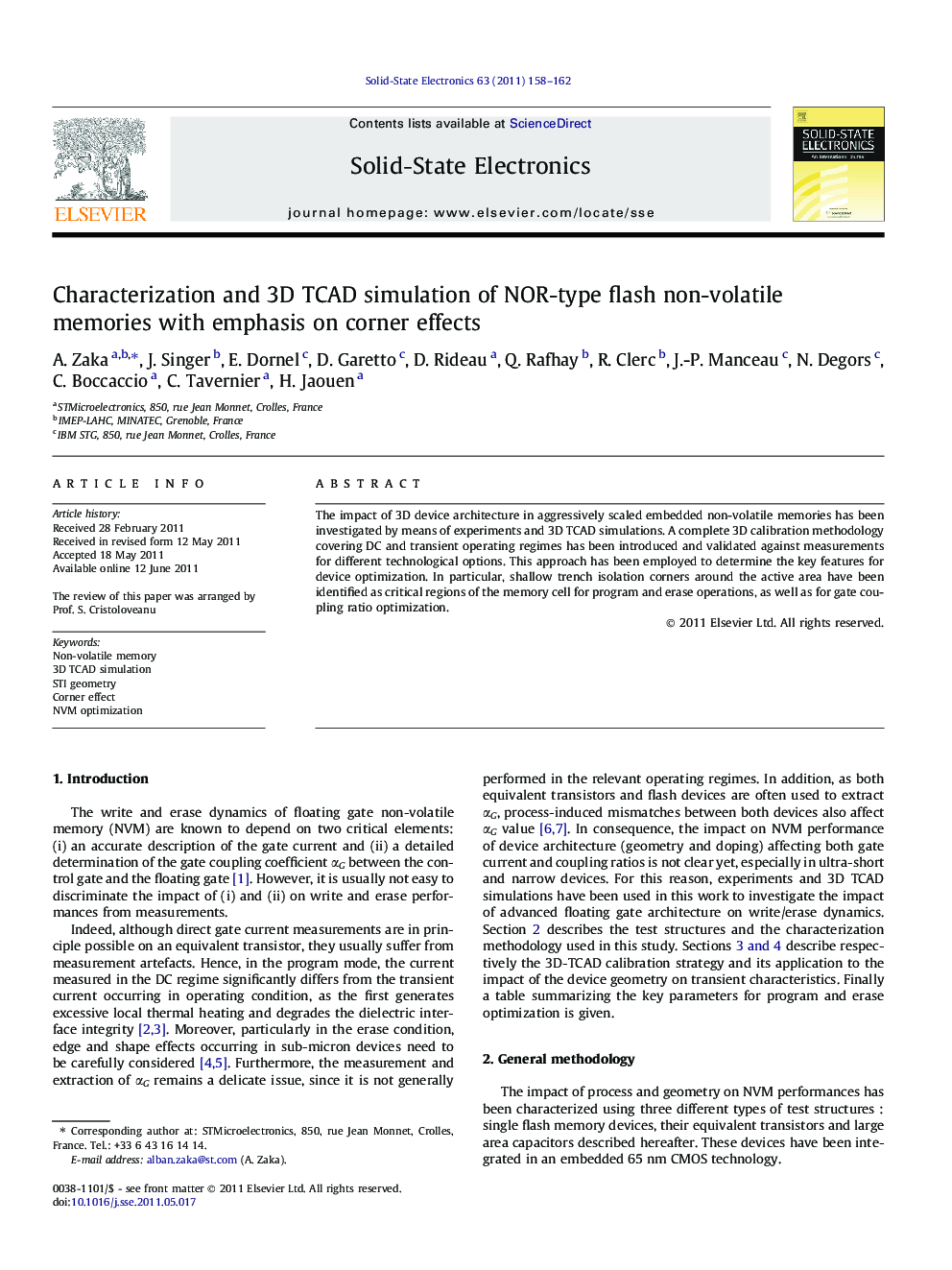| Article ID | Journal | Published Year | Pages | File Type |
|---|---|---|---|---|
| 748293 | Solid-State Electronics | 2011 | 5 Pages |
The impact of 3D device architecture in aggressively scaled embedded non-volatile memories has been investigated by means of experiments and 3D TCAD simulations. A complete 3D calibration methodology covering DC and transient operating regimes has been introduced and validated against measurements for different technological options. This approach has been employed to determine the key features for device optimization. In particular, shallow trench isolation corners around the active area have been identified as critical regions of the memory cell for program and erase operations, as well as for gate coupling ratio optimization.
► 3D TCAD simulations of NOR Flash memories. ► Calibration methodology against measurements on DC and transient regimes. ► Device architecture and corner effects investigated. ► Sharp shallow trench isolation profiles enhance program/erase mechanisms. ► Shallow floating gate over-etched regions increase coupling and operating speed.
